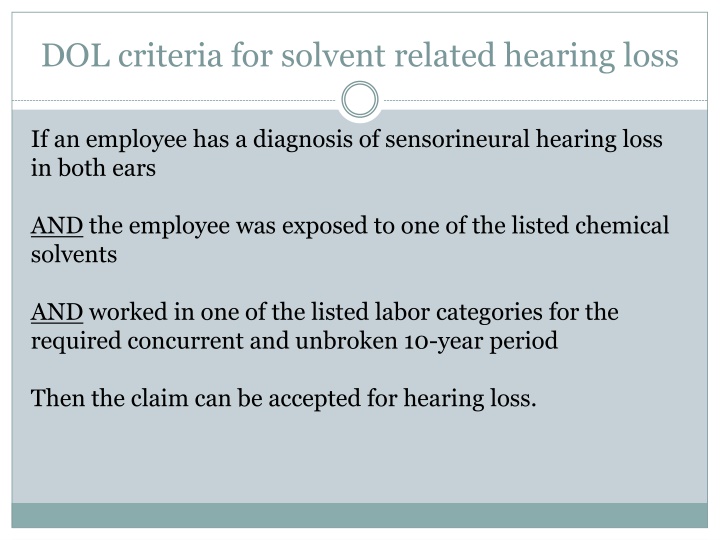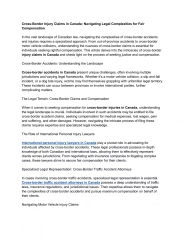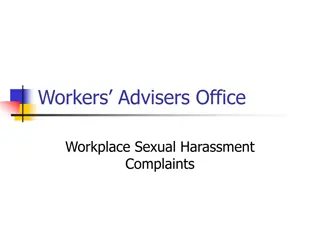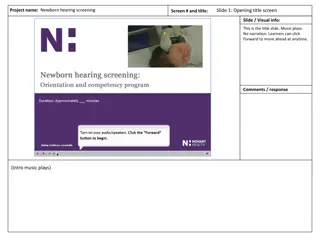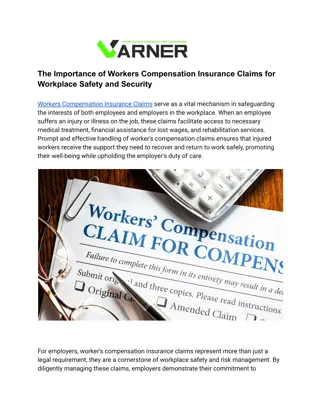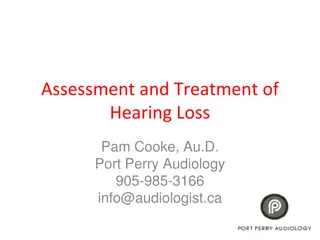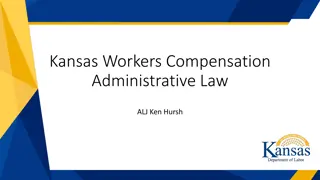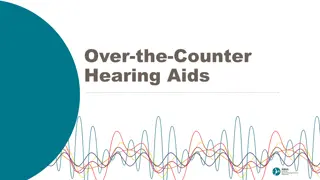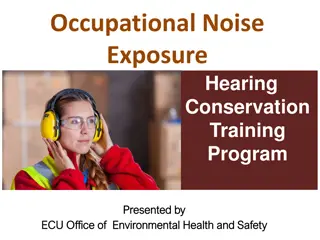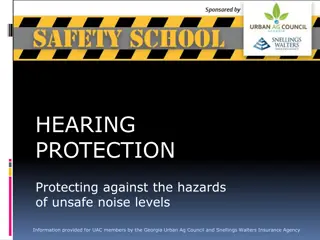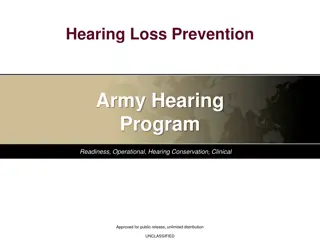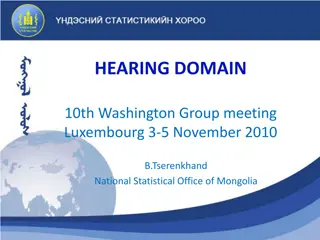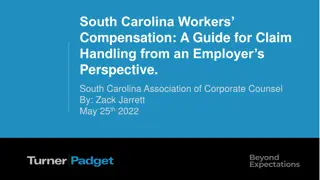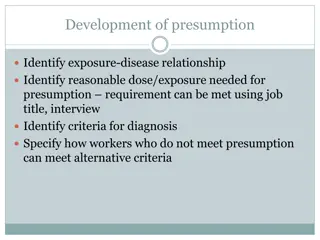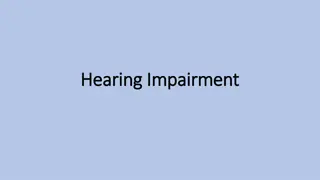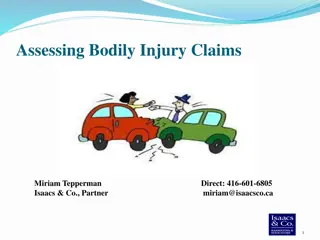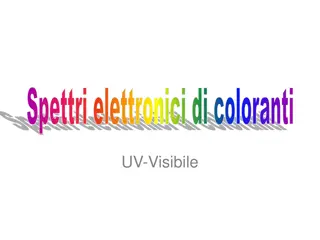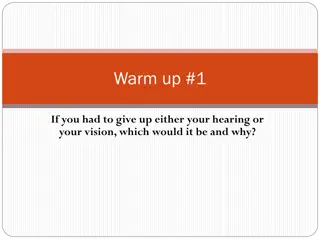Criteria for Solvent-Related Hearing Loss and Compensation Claims
The Department of Labor (DOL) has specific criteria for accepting claims related to solvent-induced hearing loss in employees. If an employee has sensorineural hearing loss in both ears, was exposed to certain chemical solvents, and worked in particular job categories for a concurrent 10-year period, the claim can be accepted. The listed solvents include Toluene, Styrene, Xylene, Trichlorethylene, Methyl Ethyl Ketone, Methyl Isobutyl Ketone, and Ethyl Benzene. Various job categories are considered qualifying for compensation, such as Boilermaker, Chemist, Electrician, and more. Systematic reviews indicate the impact of solvents on hearing, with limitations due to multiple exposures. Animal and human data support the link between chemicals like Styrene and Toluene and hearing loss. The Nordic Expert Group emphasizes the effects of Xylene, TCE, and solvent mixtures on hearing impairment.
Download Presentation

Please find below an Image/Link to download the presentation.
The content on the website is provided AS IS for your information and personal use only. It may not be sold, licensed, or shared on other websites without obtaining consent from the author.If you encounter any issues during the download, it is possible that the publisher has removed the file from their server.
You are allowed to download the files provided on this website for personal or commercial use, subject to the condition that they are used lawfully. All files are the property of their respective owners.
The content on the website is provided AS IS for your information and personal use only. It may not be sold, licensed, or shared on other websites without obtaining consent from the author.
E N D
Presentation Transcript
DOL criteria for solvent related hearing loss If an employee has a diagnosis of sensorineural hearing loss in both ears AND the employee was exposed to one of the listed chemical solvents AND worked in one of the listed labor categories for the required concurrent and unbroken 10-year period Then the claim can be accepted for hearing loss.
DOL will accept a claim for these solvents as cause of hearing loss Toluene Styrene Xylene Trichlorethylene Methyl Ethyl Ketone Methyl Isobutyl Ketone Ethyl Benzene
DOL accepts the following job categories, when held for a period of at least ten consecutive years prior to 1990, as qualifying for compensation for solvent induced hearing loss Boilermaker Chemical Operator Chemist Electrician/Electrical Maintenance/Lineman Electroplater/Electroplating Technician Garage/Auto/Equipment Mechanic Guard/Security Officer/Security Patrol Officer (i.e. firearm cleaning activities) Instrument Mechanic/Instrument Technician Janitor Laboratory Analyst/Aide Laboratory Technician/Technologist Lubricator Machinist Maintenance Mechanic Millwright Operator (most any kind) Painter Pipefitter Printer/Reproduction Clerk Refrigeration Mechanic/HVAC Mechanic Sheet Metal Worker Utility Operator
Systematic reviews Recent reviews conclude that both animal and human studies clearly establish effect on solvents on hearing Review of compound specific data has clear limitations since most workers are exposed to multiple solvents Review of mixed exposure data more limited Consensus statements are available from NIOSH (2003), EPA (2003) No consensus on dose-response or existence of threshold in reviews although recent paper has addressed it (through European collaborative study)
Animal and human data Systematic review by NIOSH and Nordic Nordic Expert Group for Criteria Documentation of Health Risks from Chemicals Styrene, toluene, xylene carbon disulfide cause hearing loss at or below current OELs Xylene, ethylbenzene: more limited occupational data. Animal data show effects at or below current OELs TCE and solvent mixtures show significant effect in human studies. Mixtures most often MEK, MIBK, xylene and toluene NR 2010;44(4) The Nordic Expert Group for Criteria Documentation of Health Risks from Chemicals; 142. Occupational exposure to chemicals and hearing impairment. A C Johnson and T C Morata
Recommendations Committee recommends that DOL develop direct disease work links for tasks with exposure to above solvents in the range of the OEL
Recommended exposure presumption for solvent induced hearing loss Work for at least 10 cumulative years in any of the job titles on list in current presumption. OR Reported exposure to styrene toluene, xylene, ethylbenzene TCE, carbon disulfide on OHQ, or evidence for exposure to those solvents in the SEM, for at least 10 years cumulative OR Reported exposures to solvent mixtures on OHQ, or evidence for exposure to those solvent mixtures in the SEM, for at least 10 years cumulative OR Exposure for 10 years cumulative established through work history and DDWLP
Recommended exposure presumption for solvent induced hearing loss, continued Additionally, claims examiners should not routinely deny claims for solvent induced hearing loss if the worker has had fewer than 10 years of exposure, does not have a DDWL for task, or is not in a labor category on list. Claims that do not meet the requirements set forth here but do have reported exposure to organic solvents for at least 5 years cumulative should be sent for IH and/or CMC review
